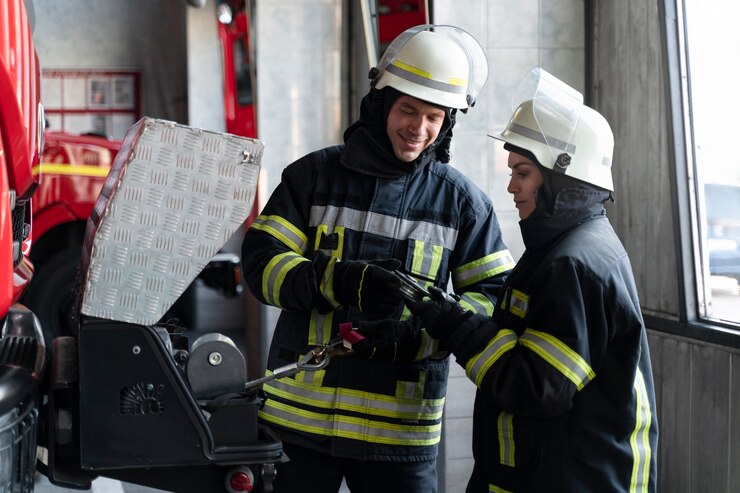Experiencing a fire in your home is a traumatic event that can leave homeowners feeling lost and overwhelmed. Once the flames have been extinguished and the smoke has cleared, the question of when and how to safely return to your home arises. This article will guide you through the steps you need to take to ensure a safe return, while emphasizing the importance of fire damage assessments throughout the process.
Assessing the Situation: When to Return
Before considering returning to your home after a fire, it is crucial to ensure that it is safe to do so. Here are key factors to consider:
1. Wait for Official Clearance
Always wait for the local fire department or your insurance adjuster to declare your home safe to enter. They will perform a thorough fire damage assessment to evaluate structural integrity and potential hazards such as lingering smoke or toxic fumes.
2. Evaluate the Damage
Once cleared, take time to visually assess the damage from the outside. Look for signs of structural issues like sagging roofs, broken windows, or exposed electrical wiring. If you notice any significant damage, do not enter until a professional has evaluated the situation.
Preparing for Your Return
Once you’ve received clearance from the authorities, you can begin preparing for your return. Here’s what to do:
1. Wear Protective Gear
Before entering your home, equip yourself with protective gear to avoid exposure to harmful substances. Wear:
- N95 respirator mask to filter smoke particles.
- Long-sleeved clothing to protect your skin.
- Sturdy boots to protect your feet from debris.
2. Bring Necessary Supplies
Gather essential supplies for your first entry into the home, including:
- Flashlight (if the power is still out).
- Water and snacks.
- Cleaning supplies (trash bags, gloves, etc.).
- A camera or phone to document damage for insurance purposes.
Entering Your Home
When you are finally ready to step inside, proceed with caution. Follow these steps for a safer re-entry:
1. Ventilate the Space
Open windows and doors to allow fresh air to circulate and help clear out any remaining smoke. Use fans if available to aid ventilation.
2. Assess the Environment
As you move through your home, check for hazards such as:
- Weak flooring or ceilings that may collapse.
- Fire-damaged appliances or furniture.
- Standing water from firefighting efforts, which could pose electrocution risks.
If you encounter any hazardous situations, leave immediately and consult a professional.
Dealing with Fire Damage Assessments
After your initial inspection, it’s essential to have a thorough fire damage assessment conducted by professionals. This assessment includes:
1. Structural Integrity Checks
Professionals will evaluate the framework of your home, including walls, roof, and foundation, to ensure they are stable and safe.
2. Smoke and Soot Damage Evaluation
This step involves checking for smoke and soot damage on walls, ceilings, and belongings. Smoke can penetrate materials, leading to ongoing health issues if not properly cleaned.
3. Water Damage Evaluation
Given that firefighting efforts often involve water, it’s crucial to assess any water damage that may have occurred. Professionals will check for mold growth and structural damage caused by moisture.
Restoration Process
Once the fire damage assessment is complete, you can begin the restoration process. Here are some steps to consider:
1. Document Everything
Take photographs of all damage for insurance purposes. Create an inventory of damaged items, noting their condition and estimated value.
2. Work with Your Insurance Company
Contact your insurance company to report the fire and start the claims process. Provide them with the documentation you gathered during your assessment.
3. Seek Professional Help
Engage fire damage restoration professionals to assist with cleaning, repairing, and rebuilding your home. They have the necessary equipment and expertise to restore your home safely.
FAQs
1. How long should I wait before returning to my home after a fire?
It’s crucial to wait for the local fire department and your insurance adjuster to declare your home safe to enter. This may take anywhere from a few hours to several days, depending on the extent of the damage.
2. What should I do if I notice lingering smoke odors after returning?
Lingering smoke odors can be dealt with through thorough cleaning and deodorizing. You may also consider hiring a professional restoration service specializing in smoke damage to ensure complete removal.
Conclusion
Returning to your home after a fire is a significant step in the recovery process. By following the outlined steps, you can ensure that your return is safe and efficient. Remember the importance of fire damage assessments throughout this journey, as they play a crucial role in ensuring your home is restored to a safe and livable condition. With the right precautions and professional help, you can begin the healing process and reclaim your space.
Orient Electric Areva Portable Room Heater | 2000W | Two Heating Modes | Advanced Overheat Protection | Horizontal & Vertical Mount | 1-year replacement warranty by Orient | White
₹1,449.00 (as of 22 November, 2024 18:32 GMT +05:30 - More infoProduct prices and availability are accurate as of the date/time indicated and are subject to change. Any price and availability information displayed on [relevant Amazon Site(s), as applicable] at the time of purchase will apply to the purchase of this product.)TEKCOOL Anti Fatigue Kitchen Rug Sets 2 Piece Non Slip Kitchen Mats for Floor Cushioned Kitchen Rugs and Mats Waterproof Comfort Standing Mat Runner for Kitchen,Home Office,Sink,Laundry (Line MAT)
₹549.00 (as of 22 November, 2024 18:32 GMT +05:30 - More infoProduct prices and availability are accurate as of the date/time indicated and are subject to change. Any price and availability information displayed on [relevant Amazon Site(s), as applicable] at the time of purchase will apply to the purchase of this product.)XMART INDIA Drawer Organizers for Underwear, Socks, Bras, Ties, Undergarments, and Scarves - Closet Storage Dividers for Household Use Wardrobe Storage Box Set of 4 (Multicolor), Plastic
₹269.00 (as of 22 November, 2024 18:32 GMT +05:30 - More infoProduct prices and availability are accurate as of the date/time indicated and are subject to change. Any price and availability information displayed on [relevant Amazon Site(s), as applicable] at the time of purchase will apply to the purchase of this product.)Ezee Black Garbage Bags for Dustbin | 90 Pcs | Medium 19 X 21 Inches | 30 Pcs x Pack of 3
₹159.00 (as of 22 November, 2024 18:32 GMT +05:30 - More infoProduct prices and availability are accurate as of the date/time indicated and are subject to change. Any price and availability information displayed on [relevant Amazon Site(s), as applicable] at the time of purchase will apply to the purchase of this product.)Honeywell Air Purifier for Home & Office, 3-in-1 filter - Pre-Filter, H13 HEPA Filter, Activated Carbon Filter, Removes 99.99% Pollutants, Allergens, Pet Danger, Smoke, Dust & Pollens - Air touch V1
₹4,987.00 (as of 22 November, 2024 18:32 GMT +05:30 - More infoProduct prices and availability are accurate as of the date/time indicated and are subject to change. Any price and availability information displayed on [relevant Amazon Site(s), as applicable] at the time of purchase will apply to the purchase of this product.)Discover more from The General Post
Subscribe to get the latest posts sent to your email.





